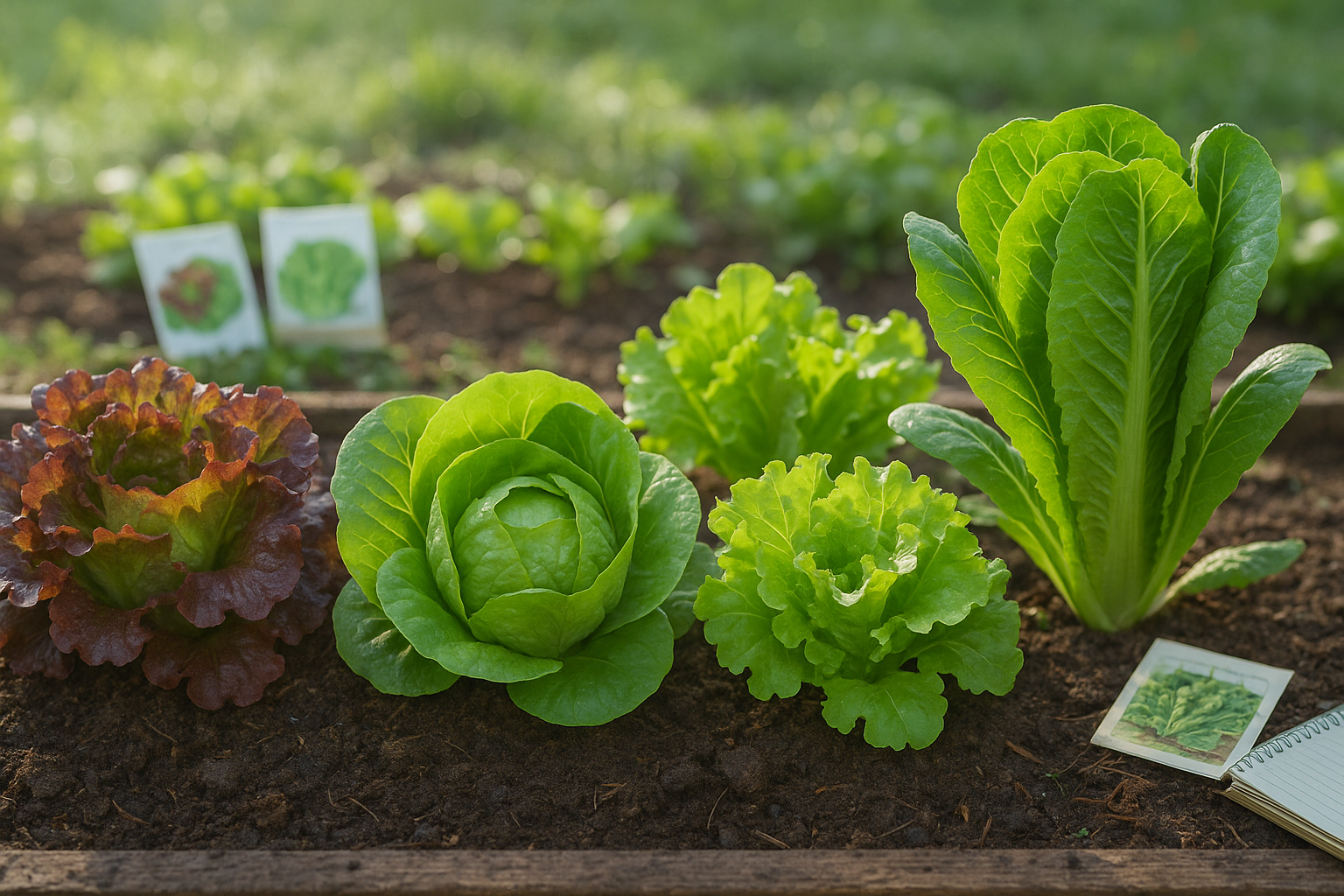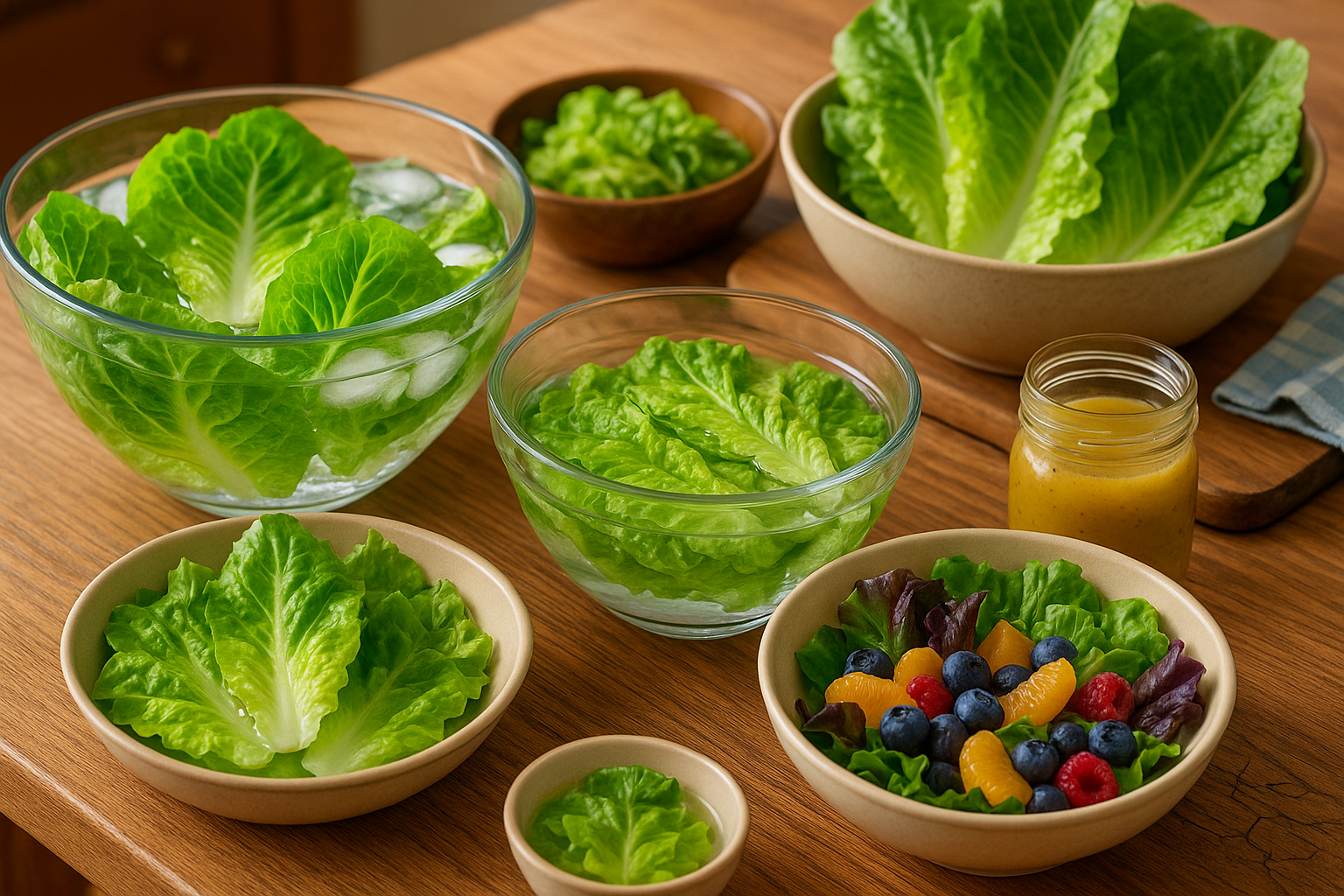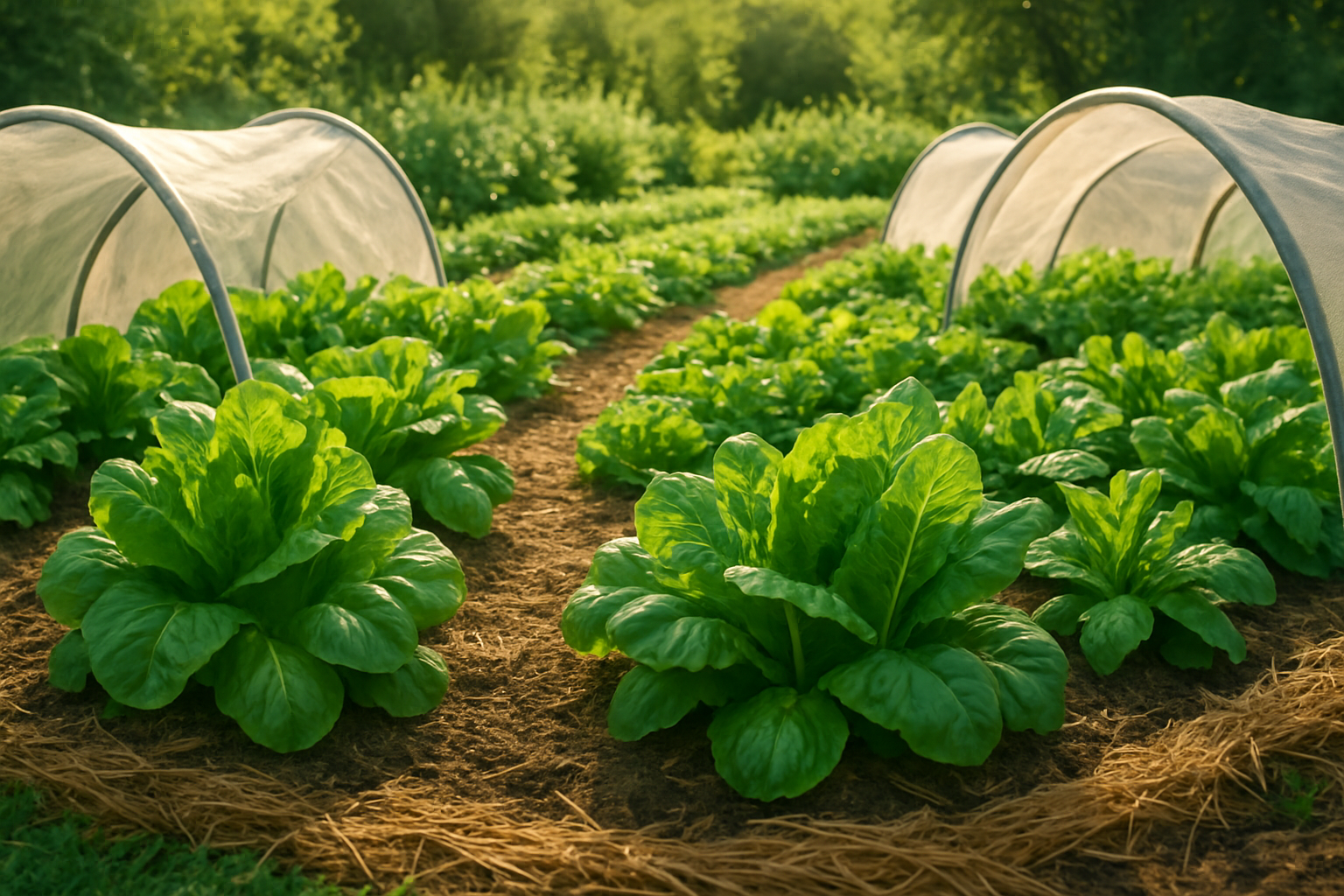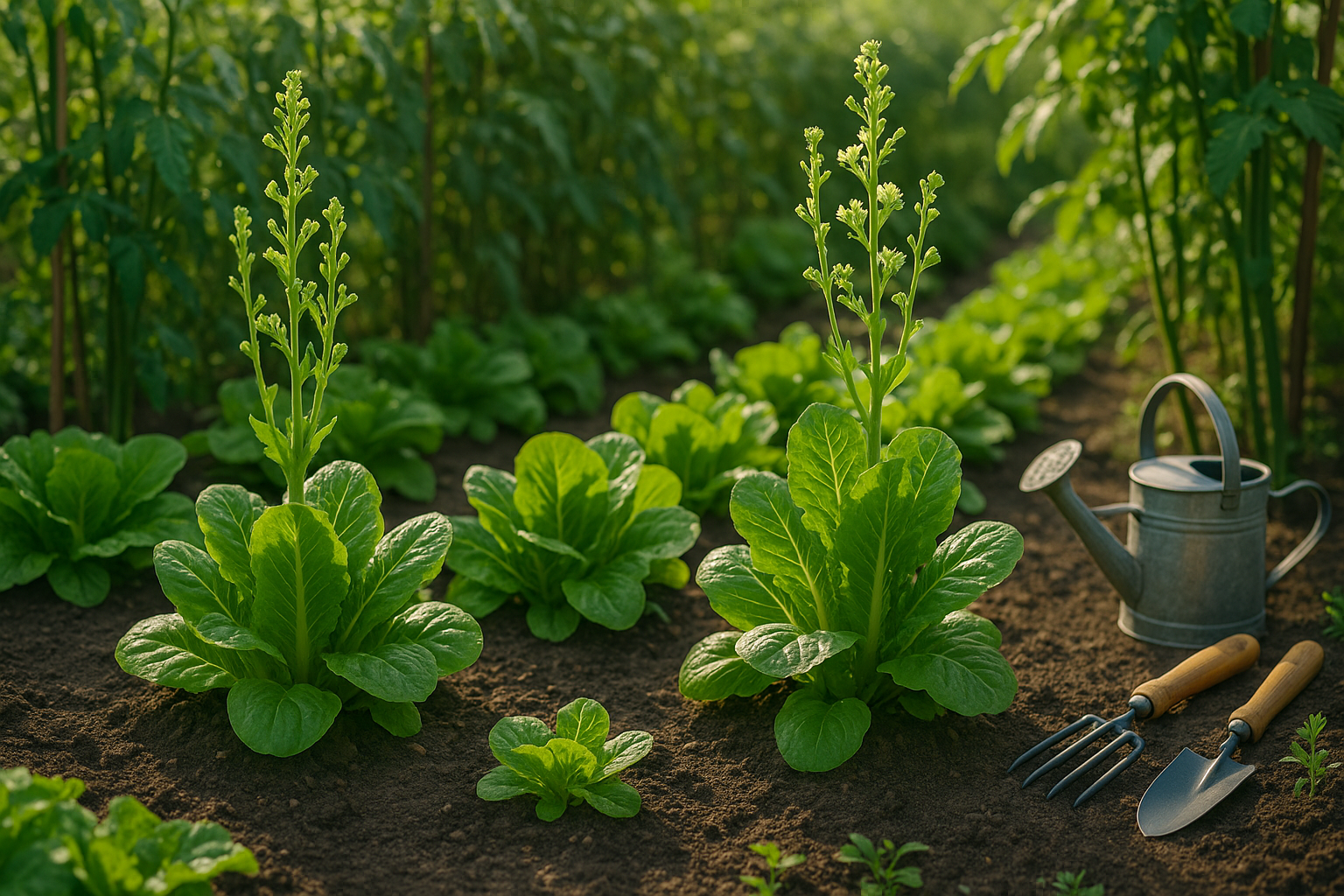Understanding Why Lettuce Turns Bitter
Bitterness in lettuce is a common frustration for many gardeners, especially after investing time in growing lush, vibrant heads, only to find sharp or unpleasant flavors at harvest. The main cause of this bitterness is a natural compound called lactucarium, which is found in higher concentrations in lettuce varieties as they mature or experience stress.
Lactucarium, sometimes called “lettuce opium,” gives the milky sap its characteristic bitter taste and acts as a defense mechanism against pests. For gardeners, understanding this is important because environmental factors such as heat, drought, or water stress can trigger a spike in lactucarium levels—especially once lettuce plants start to bolt (send up a flower stalk).
When you notice your lettuce leaves getting tougher or milkier, it’s often a sign the plant is producing more of these compounds in response to stress or aging.
Tips to Reduce Lettuce Bitterness
- Select heat-tolerant or slow-bolting varieties.
- Provide consistent watering to avoid stress.
- Mulch to keep roots cool.
- Harvest in the cool of the morning.
- Harvest early, as baby lettuce leaves are usually milder with lower lactucarium levels.
With a bit of attention to timing and growing conditions, gardeners can enjoy crisp, sweet lettuce straight from their gardens and avoid the disappointment of a bitter bite.
Environmental Factors That Cause Bitterness
Hot weather, intense sunlight, and drought stress are some of the main environmental factors that can make lettuce taste bitter instead of crisp and mild. Lettuce prefers cooler temperatures, generally between 60°F and 70°F, so when the mercury rises above this range—especially during the peak of summer or sudden heat spikes—lettuce plants can go into survival mode.
This stress causes them to produce higher levels of bitter-tasting compounds called sesquiterpene lactones. These compounds help the plant fend off pests but make the leaves less appetizing for us. Intense, direct sunlight can also raise leaf temperatures and compound the stress, while dry soil or inconsistent watering deprives roots of the moisture they need, further intensifying bitterness.
These issues often come together in late spring or early summer, when temperatures can suddenly soar for a few days. Gardeners sometimes notice their lettuce “bolting”—shooting up a flower stalk—as a clear sign of this stress, which almost always signals bitterness in the leaves.
How to Reduce Bitterness
Thankfully, a few simple tactics can help:
- Provide afternoon shade by planting lettuce near taller crops like tomatoes or using shade cloths draped over hoops.
- Mulch with straw, grass clippings, or shredded leaves to keep the roots cool and soil moist. This buffers plants against temperature swings and reduces water evaporation.
- Water consistently—early in the morning is usually best.
- Monitor weather forecasts so you can add shade or harvest early if a heatwave is coming.
By understanding and responding to these environmental triggers, you can enjoy sweeter, crisper lettuce all season long.
Choosing and Timing the Right Lettuce Varieties

Selecting the right lettuce variety is key to harvesting crisp, sweet leaves rather than bitter ones, especially as temperatures rise. Some types, like Butterhead (‘Buttercrunch’) and Looseleaf (‘Salad Bowl’ or ‘Red Sails’), are naturally less prone to bitterness and can tolerate warmer weather better than Crisphead (Iceberg) lettuces, which often bolt and turn bitter quickly.
For gardeners in regions with hot summers, look for heat-tolerant varieties such as ‘Jericho’ (a romaine developed for desert climates) or ‘New Red Fire’, designed to resist bolting. Matching your lettuce choice to your local climate and understanding your area’s average last frost and typical heat spikes is also crucial; many cooperative extension websites offer region-specific planting charts to help you plan.
To minimize bitterness, sow lettuce seeds early in spring or wait for cooler fall temperatures, aiming to avoid the hottest part of the season—this might mean sowing every couple of weeks in early spring for a continual harvest, or starting a late summer crop in mid-to-late August for fall harvesting.
If unexpected warm spells hit, provide some afternoon shade with a row cover or plant taller crops nearby to shield your lettuce and extend the sweet, tender harvest.
Growing Practices to Prevent Bitterness
Preventing lettuce bitterness starts with consistent and adequate watering, especially as the weather warms up. Dry or erratic watering stresses the lettuce, causing the leaves to taste sharp or bitter. Aim to water deeply and regularly, keeping the soil evenly moist but not soggy. A layer of mulch can help retain moisture and keep roots cool.
Healthy soil is equally important. Before planting, enrich your beds with plenty of compost or well-rotted manure, and use balanced, slow-release fertilizers that provide steady nutrients without overwhelming the plants. Giving lettuce enough space to grow is another key: thin seedlings to allow air circulation and room for leaves to expand, which helps reduce competition for water and nutrients.
Succession planting—sowing new seeds every two to three weeks—ensures a continual harvest and prevents leaves from sitting too long in the garden, where they can become tough and bitter. Frequent harvesting of outer leaves also encourages new, tender growth; just snip the larger leaves as needed rather than letting heads fully mature all at once.
Watch your crops closely for signs that lettuce is ready to harvest: leaves should look vibrant, feel soft, and hold a rich green color. If you notice the central stalk beginning to elongate (a process called “bolting”) or the leaves turning thicker and more rigid, it’s time to act—these are cues the plant is preparing to flower, and bitterness won’t be far behind.
By staying vigilant with these practices, you can enjoy a steady supply of crisp, sweet lettuce all season long.
Can You Fix Bitter Lettuce? Practical Solutions

Bitter lettuce can be a real letdown, but you don’t have to toss it right away—there are a few practical tricks to fix or at least soften that sharp taste. One quick remedy is soaking the leaves in very cold water for 10 to 15 minutes; this can draw out some bitterness and help restore the lettuce’s crisp texture.
Blanching is another good option—just dip your lettuce into boiling water for a few seconds, then plunge it into ice water. This method won’t make your lettuce taste like sugar, but it often reduces harsh notes.
If you’re making a salad, balance strong flavors by adding sweeter ingredients like berries, mandarin oranges, honey-laced dressings, or even a sprinkle of sugar.
Bitter lettuce is also perfect for cooking: toss it into stir-fries, wilt it with garlic and olive oil, or use it in soups where the heat mellows bitterness and other flavors dominate.
If the leaves are still too assertively bitter, or you feel they’d ruin a meal, composting is a great eco-friendly way to return those nutrients to your garden.
Sometimes, bitterness comes from stress—like hot weather, drought, or lettuce left too long in the ground. In these cases, it’s actually best to remove bitter plants and start with new seeds for the freshest, sweetest harvest.
By knowing when to salvage and when to start fresh, you can enjoy crisp, flavorful greens all season long.
Preventing Bitter Lettuce in Future Gardens

To prevent bitter lettuce in future gardens, start by providing a bit of midday shade—simple row covers or planting next to taller crops can shield lettuce from harsh afternoon sun, which often triggers bitterness. Consistent watering is crucial, too, as letting the soil dry out between waterings can stress the plants and affect flavor.
Timing matters: plant lettuce early in spring or late summer to avoid the heat of midsummer, when bolting (and bitterness) happens fastest. Choosing heat-resistant or slow-bolting varieties like ‘Buttercrunch’ or ‘Romaine’ can also make a big difference.
Equally important is paying attention to what works—and what doesn’t—in your own garden. Keep notes on weather patterns, varieties you plant, watering habits, and the results. If you notice leaves turning bitter sooner than expected, tweak your shade or watering next time.
Each season brings its own challenges and learning opportunities, so don’t be afraid to experiment or adjust practices as needed. Over time, these small observations and changes can add up to sweeter, better-tasting lettuce harvests.
